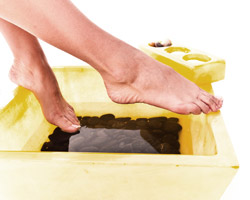Acupuncture and Tui Na Have A Great Potential To Benefit

Objective: To explore the safety and efficacy of Tui Na as a treatment for spasticity of the muscles of patients suffering from stroke. Study design: This cross-sectional study evaluated the effects of Tui Na on muscle spasticity in stroke patients. A sample of 14 stroke survivors with healthy neurological functions were randomly assigned to two groups. Following stroke, they were treated with Tui Na (nontraditional treatment) or conventional medical therapy, paired with physiotherapy for 4 months. Researchers performed a rating of muscular and physical weakness at the end of the four month period.
There was a significant effect of Tui Na on the mean improvement in the mean disability score (MDS), but not on improvement in mean muscle function or muscular function at the end of the follow-up. Conventional treatments included regular injections of corticosteroids or nitroglycerin. Other treatments included transcutaneous electric stimulation, radiofrequency ablation laser beam therapy, and application of local anesthetic. Six of seven patients who received Tui Na saw improvement (ranging from mild to significant), while eight of nine patients who received conventional treatments showed no improvement. These results show the value of Tui Na in the recovery of stroke patients however no conclusive conclusion can be drawn about the effect on cognition, emotional well-being, or sleep quality. Future studies are required to explore these areas in greater detail.
Safety and effectiveness Safety and Effectiveness: There were no adverse reactions during the acute phase of either group. One post-stroke trial gave patients oral medications to treat cervical radiculopathy. The medications did not affect patients in either group. In one trial patients who received the dose of loperamide showed no pain reduction or any decrease in cough and fever. The researchers believe that this medication could be effective in the short-term management of neck pain, especially for smokers.
Study by Chun et al. found that patients treated with acupuncture experienced significant improvement in mean both the perception of pain and the ability to perform normal physical activities. Researchers stressed the importance of large-scale, randomised controlled trials to prove the effectiveness of acupuncture in treating cervical radiculopathy. They concluded that more research are required to confirm these results and determine whether acupuncture is useful in treating cervical radiculopathy. The data presented do not suggest that acupuncture is a good option to treat spinal cord injuries.
Chung and. 출장마사지 Chung et. conducted an analysis meta-analyse. revealed an improvement in the mean of nerve damage in patients who underwent Tui Na therapy. Although the effect was not statistically significant (odds –0.40) but it was statistically significant (confidence interval: -0.15 to 0.2). This study is significant because of the lack of studies conducted in this area. It isn't known if the improvement in patients was due to acupuncture or the effects of the treatment of nerves. Nevertheless, Tui Na therapy appears to be an effective alternative to conservative treatments in patients suffering from chronic symptoms of neck pain, as demonstrated by the increased pain score in the group that was treated.
A systematic review by Albers and coworkers showed that tui-na therapy has positive effects on patients suffering from cervical radiculopathy. However, the majority of these studies came from USA and Canada with large numbers of participants came from different cities and the quality of the research was poor. The pooled effect was not significant ( the pooled effect size was -0.15). These studies confirm the efficacy of Chinese medicine in managing chronic disability and pain.

There are a number of reasons why certain studies are superior to others. This is due to the study design, reporting bias, and other bias factors in addition to the characteristics of the treatment arm (whether it was active or placebo). Another potential source of variability is the use of different assessment tools. The problem with questionnaires in randomised controlled trials is their low reliability and inability to accurately assess the potential outcomes. Variability can also be caused by the number of subjects being treated. Some people are better treated within the groups than others.
To conclude we believe that, although there are some interesting distinctions between Chinese soft tissue acupuncture and tui na massage but the evidence is too insufficient to support a convincing case either way. Both treatments can be beneficial particularly when combined. We suggest anyone suffering from neck pain and disabilities should seek advice from their physician. We also suggest following any advice above carefully, and do not stop treating your problem when the symptoms appear to be going away. This will ensure you receive the most effective treatment possible without causing more injury or aggravating the condition. If you are looking for more information on how to treat stiff necks and other soft tissue issues, you may be interested in visiting our website.
